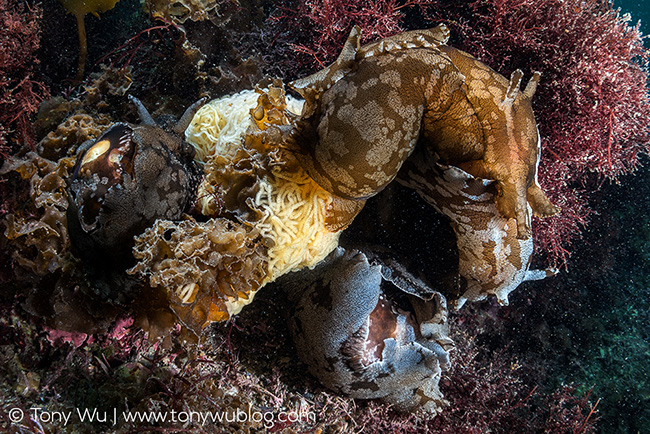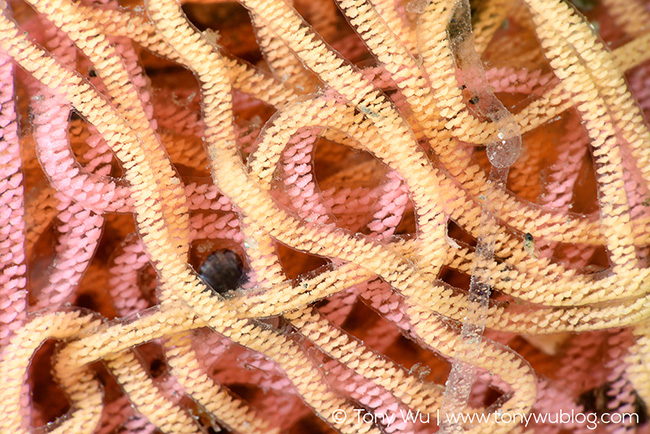Whereas nudibranchs tend to be small enough to be considered cute, sea hares (Aplysia sp.) tend to be big, and well...kinda' ugly. They don't get much love.
So the other day, when I said, "Hey, you know all those sea hares we saw piled up all over the place? I want to come back and photograph them," my friends Morinaga-san and Hoshi-san looked at me like, "What's wrong with you?" But I'm used to that.

It took me a few days, but I made it back, hoping that the mass-mating I had seen was still going on. Fortunately, the life of submerged slugs takes place in slo-mo, so yup, they were still there. Finding the clumps of procreating protoplasm wasn't a challenge; finding them in a spot conducive to taking a photo was though.
The orgy of oversized opistobranchs was happening in shallow water, in a small bay with substantial surge and mucked-up visibility...and the sea hares had a tendency to do their thing in crevices between large rocks and such, making it impossible to get a clear view, photographically speaking. There were certainly larger groups around, but I was fortunate to find the cluster pictured above.
What attracted me in the first place to these not-so-photogenic-but-unfairly-underappreciated animals was their eggs. In the photo above, some eggs appear yellow, some white. That's normal.
The first time I saw them in this area, when I had macro set-up with me, I found a clump of pink and yellow eggs. "Oooohhhhh, pretty," I thought and took a photo:

When I viewed the image at 100%, the intertwined spaghetti-like strands were even more beautiful than I had thought. Thus I returned with a wider lens in hand to photograph the context, the "eggsplanation" so to speak. (I apologise.)
Incidentally, sea hares are known as ame-furashi (アメフラシ) in Japanese.